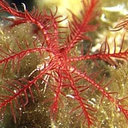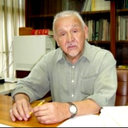Disturbance of serotonergic neurotransmission in patients with postmyocardial infarction and depression.
Ключови думи
Резюме
The objective of this study was to assess the hypothesis that patients who develop depression after myocardial infarction (MI) have a lower level of brain serotonergic neurotransmission through measurement of plasma free fraction of L-tryptophan and intensity-dependence auditory-evoked potentials (IDAEPs). A cross-sectional study was carried out in 74 adults after MI. Thirty-four patients suffered from depression and 40 patients did not demonstrate depressive symptoms. We measured the free fraction, bound and total plasma L-tryptophan, and neutral amino acids as well as recording IDAEPs. Patients who developed depression after MI showed a significantly lower level in the free fraction of L-tryptophan and in the ratios of free fraction of L-tryptophan/total L-tryptophan and free fraction of L-tryptophan/neutral amino acids. It is noteworthy that the slope of the amplitude/stimulus intensity functions (ASF slope) of the N1/P2 component was significantly higher post-MI in depressed patients. Higher ASF slope of the N1/P2 component associated with a low free fraction of L-tryptophan in plasma reflect a low brain serotonergic neurotransmission. These findings suggest an important deterioration of brain serotonergic activity as a pathophysiological mechanism in post-MI patients for the development of clinical depression. Therefore, we propose these biochemical and electrophysiological procedures as noninvasive clinical indicators of brain serotonergic activity in these patients.




